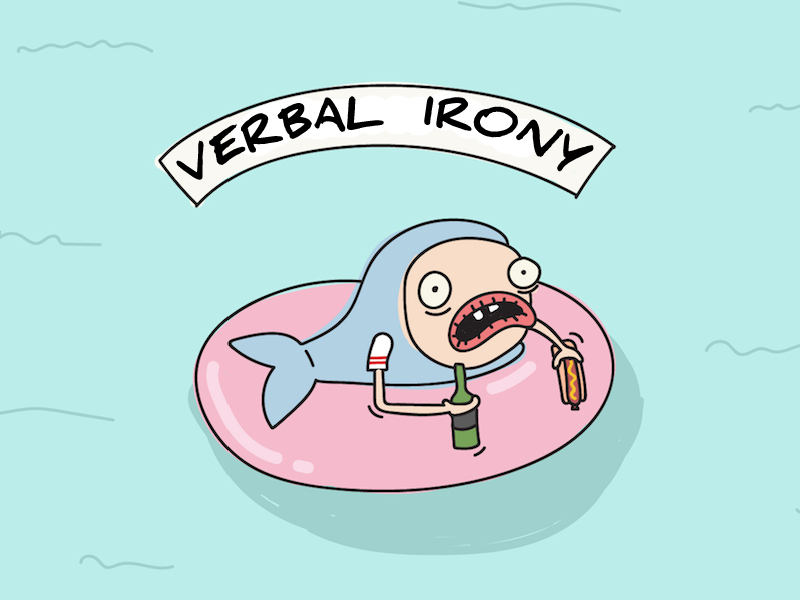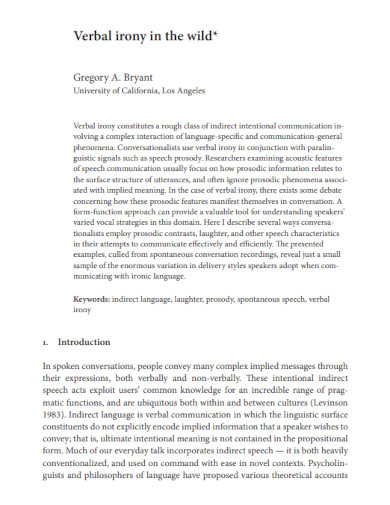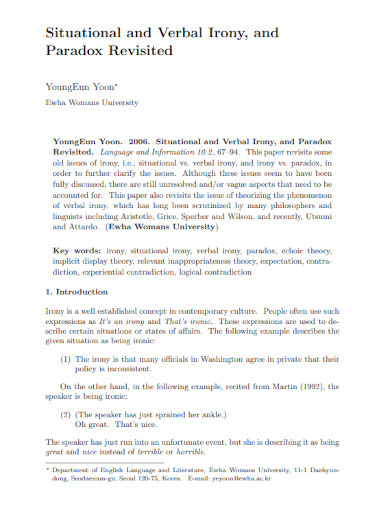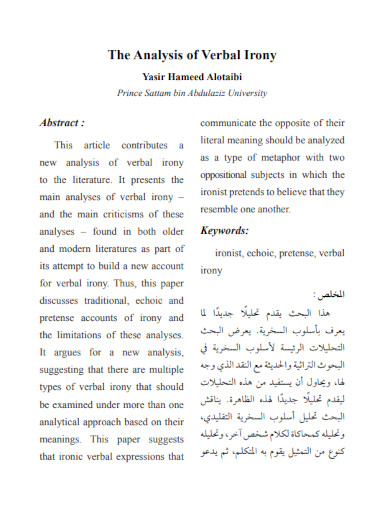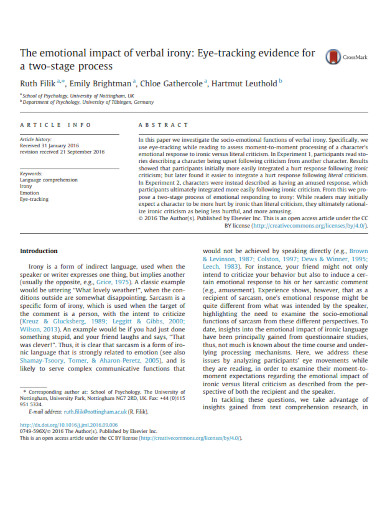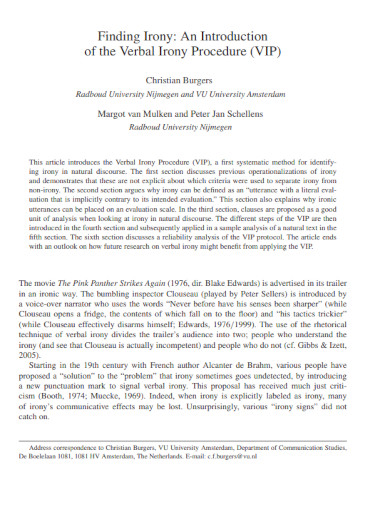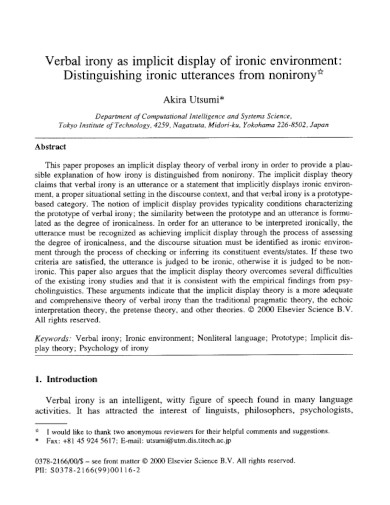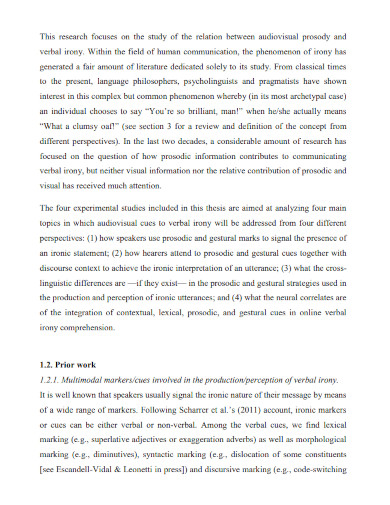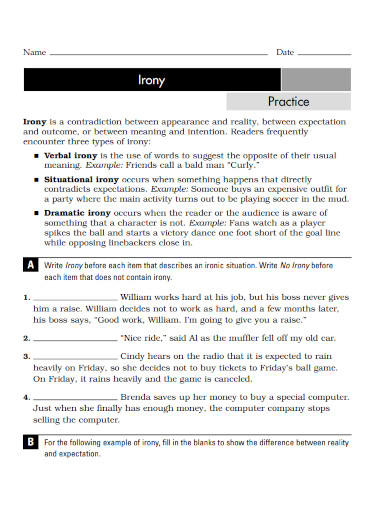9+ Verbal Irony Examples to Download
The irony is a literary technique that we use when we say something that is entirely different from what actually mean or feel. Often mistaken for sarcasm examples, irony is a type of sarcasm and a type of figurative language.
1. Verbal irony in the Wild
2. Interpreting Verbal Irony Example
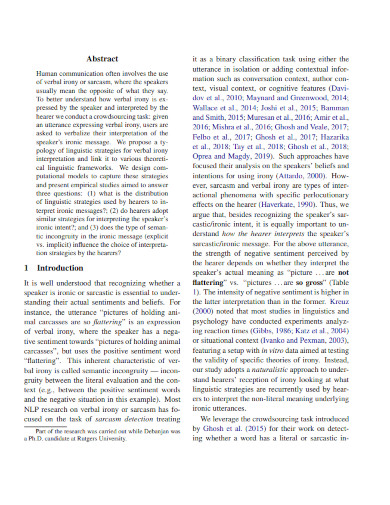
aclanthology.org
3. Situational and Verbal Irony Example
4. Acoustic Characteristics of Verbal Irony
5. The Analysis of Verbal Irony
6. Emotional Impact of Verbal Irony
7. Introduction of the Verbal Irony Procedure
8. Verbal Irony as Implicit Display of Ironic Environment
9. Audiovisual Prosody and Verbal Irony
10. Types of Verbal Irony Worksheet
What is Verbal Irony?
Verbal irony is used when we say something that is different or contradictory to what we would intend to say. There are three types of irony, namely: situational irony, dramatic irony, and verbal irony. Verbal irony can be used in writing, reports, email examples, and even conversations with your friends as a way to mock someone or something.
How to Use Verbal Irony
There are many ways to use verbal irony. From conversations, literary pieces, emails, essay writing, school speeches, and for some report writing. The idea is you know how to use it and when to use it. Here are steps to give you an idea on how to use verbal irony.
Step 1: Get Some Knowledge of Who Your Audiences Are
Know your audience. The reason for this is to be able to know what content you are going to be writing. Since context is key. Verbal ironies rely on the type of context you are going to use for it to be effective. When verbal ironies are misinterpreted, there is going to be a tendency that your audiences will never understand and the effect would be pointless.
Step 2: The Timing, Theme, and Tone Are Important
Timing, theme, and tone are very important. The timing of using a verbal irony is important. To deliver the verbal irony in a comedic effect, you must remember when to use it. Theme is also important, as you must not be using verbal irony without a theme for it. Watch your tone as well.
Step 3: Make It Brief and Clear
Make it brief and clear. Verbal ironies are only very effective when they are clear and concise. Make your verbal irony statements short. Making it too long would only bore your audiences.
Step 4: Do Not Overuse Verbal Irony
Do not overuse verbal irony in your conversations, essays, speeches, reports, etc. Not only will it lose its purpose, it would also lead your writing or your conversation stale. Avoid doing that.
FAQs
What are the types of irony?
There are two types of verbal irony, and these two types are: overstatement and understatement. Overstatement is the exaggerated irony. Exaggerating a word to emphasize something in the sentence. Understatement on the other hand is the opposite. Understatement is when you undermine something in the sentence.
When is the best opportunity to use verbal irony?
The best opportunity to use verbal irony is through the context of your conversations, essays, humor, writing, reports, and speeches. This tool is important but you must also take to consideration who your target audiences are to use verbal irony. The point is to engage with your audiences, not to confuse them or bore them when they do not understand or had heard too much of the verbal irony.
What is the difference between verbal irony and dramatic irony?
Verbal irony and dramatic irony are types of irony. The difference is for verbal irony, it is expressed in the form of words. However, dramatic irony arises from the knowledge between the characters in the story and the audience.
Verbal irony is perhaps the most common type of irony. We use it in our conversations and you might be unaware that you are using it on a daily basis. Notice the eye rolls of the people you are talking to? You are most likely incorporating verbal irony in your conversations.


